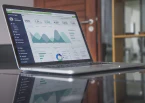Innovative Ideas for a Better Future: Insights from TED Talks

How Safecast Emerged from the Chaos of a Natural Disaster
March 10, 2011, started like any other day for me. I was in Cambridge, MA, meeting with colleagues, trying to figure out our next steps. Little did I know, that day was about to change my life and many others in ways we never imagined.
At midnight, a magnitude 9 earthquake hit off the Pacific coast of Japan, and my family was there. Panic set in as I frantically searched for any information I could find about the disaster. News outlets were not providing the information I needed, and I felt helpless.
Then, I turned to the internet, where I found other people in similar situations. Together, we loosely formed a group called Safecast. Our mission was to measure the radiation levels and get that data out to the public. It was evident that the government was not going to provide this information, so we took matters into our own hands.
Three years later, Safecast has become one of the most successful citizen science projects in the world, and we have created the largest open dataset of radiation measurements. We designed our own Geiger counters, which you can download the designs and plug them into the network. We also have an app that shows you most of the radiation in Japan and other parts of the world.
What’s interesting is how a group of amateurs with no prior experience came together to do something that NGOs and the government were incapable of doing. This was made possible by the internet and the principles of innovation that emerged from it.
Before the internet, innovation required millions of dollars and a team of experts to get anything substantial off the ground. However, the cost of innovation has decreased dramatically, and people can now collaborate, communicate and distribute ideas easily and cheaply. This democratization of innovation has led to a new way of thinking about how we create, learn, and innovate.
The Safecast story is a prime example of this. We didn’t have a detailed plan, but we knew what we wanted to accomplish. We had a compass that pointed us in the right direction, and we followed it every step of the way. We learned as we went, and we didn’t let the lack of resources stop us from achieving our goal.
Innovation is no longer just for the big institutions with deep pockets. It’s now accessible to anyone with an internet connection and a passion for creating something new. The world is complex, but the key is to keep things simple and focus on being connected, always learning, fully aware, and super present.
Pushing Innovation to the Edges: A New Model for Success
Innovation has always been a crucial element of success for any organization. However, the traditional approach to innovation has typically been centralized, with ideas and decisions coming from the top-down. But what if we could change this model? What if we could push innovation to the edges of the organization, allowing anyone and everyone to contribute and participate in the innovation process?
This is exactly what some organizations are doing today, and it’s proving to be a game-changer. By enabling employees and stakeholders at all levels of the organization, these companies are able to tap into a wealth of diverse perspectives, skills, and experiences. This, in turn, leads to more creative and effective solutions, as well as a culture of innovation that is embedded throughout the organization.
One key aspect of this new model for innovation is the use of technology to connect people and ideas. Digital platforms and tools allow individuals and teams to collaborate and share ideas across departments, locations, and even time zones. This not only makes it easier for everyone to contribute, but it also enables faster and more efficient innovation processes.
But pushing innovation to the edges of the organization isn’t just about technology. It also requires a shift in mindset and culture. Leaders need to be willing to give up some control and trust that their employees and stakeholders have the knowledge and expertise to contribute meaningfully to the innovation process. Employees, in turn, need to be encouraged and enabled to take risks, experiment, and share their ideas.
Ultimately, the success of this new model for innovation depends on a willingness to hug change and a commitment to continuous improvement. By pushing innovation to the edges of the organization, companies can tap into the full potential of their people and create a culture of innovation that drives success and growth.
How the Internet Enabled Citizen Science and DIY Solutions
The internet has transformed the way we communicate, share information and even conduct scientific research. One of the most exciting developments in recent years has been the rise of citizen science and DIY solutions, enabled by the power of the internet and the democratization of knowledge.
In the past, scientific research was the exclusive domain of professional scientists, with expensive equipment and access to funding. But now, with the internet, anyone can become a scientist, and the tools and resources needed to conduct research are more accessible than ever before.
Citizen science projects are collaborative research efforts between professional scientists and the general public. These projects allow volunteers to collect and analyze data, which can then be used by scientists to answer important questions about the world around us. Some examples of citizen science projects include monitoring bird populations, tracking weather patterns, and mapping the distribution of plant and animal species.
Another exciting development is the rise of DIY solutions. Thanks to the internet, people now have access to vast amounts of information and can teach themselves a variety of skills, from coding to electronics to 3D printing. DIY enthusiasts can use these skills to create innovative solutions to real-world problems, often at a fraction of the cost of traditional solutions.
For example, some DIY enthusiasts have created low-cost air quality sensors that can be deployed in communities to monitor pollution levels. Others have created 3D-printed prosthetics that are affordable and customizable, allowing people with disabilities to regain mobility and independence.
The internet has enabled citizen science and DIY solutions to flourish, enabling people to take control of their own lives and contribute to scientific research in meaningful ways. As technology continues to advance, we can expect even more exciting developments in this field.
The Power of Pull: Leveraging Resources from the Network
In today’s world, the power of networks and the internet is undeniable. One of the most significant benefits of this interconnectedness is the ability to leverage resources from the network. This concept of “pull” is based on the idea that we can attract the resources we need by putting ourselves out there and making connections with others.
In the past, we relied on “push” strategies, where we would invest in resources upfront and hope they would be useful later. With pull, we can access the resources we need when we need them, without having to invest upfront. This is a fundamental shift in how we think about resources and our ability to access them.
One of the most remarkable examples of this is open-source software. Instead of relying on a single company or organization to create software, we can tap into a global network of developers and contributors to create and improve software collaboratively. This approach has led to the creation of some of the most widely-used software programs in the world, such as Linux and Apache.
Another example of pull is crowdfunding. By putting a project out there and tapping into the resources of a network, individuals and organizations can raise money and support for their projects without relying on traditional funding sources. This has enabled many innovative projects to get off the ground, which might not have been possible otherwise.
The power of pull is not limited to software and fundraising. We can leverage the network to access information, knowledge, and expertise from around the world. By making connections and building relationships, we can tap into a vast network of resources that can help us achieve our goals and solve problems.
In conclusion, the power of pull is a game-changer in how we approach resources and solve problems. By leveraging the network, we can access resources when we need them, tap into a global pool of expertise and knowledge, and achieve more significant things than we could on our own.
Learning Over Education: Hugging a New Approach to Knowledge
Learning and education may seem interchangeable, but they are quite different. Education is the systematic process of learning in a structured setting, while learning is a natural process that occurs organically throughout life. The traditional education model has been around for centuries, but it’s not the only way to acquire knowledge.
In recent years, there has been a shift towards prioritizing learning over education. This approach acknowledges that learning doesn’t only happen in a classroom and that knowledge can come from a variety of sources, including real-life experiences and interactions with others.
The concept of lifelong learning is becoming increasingly important in today’s fast-paced world. With rapid advancements in technology and changes in the job market, people must continue to learn new skills and adapt to new situations throughout their lives. This requires a mindset shift from education as a means to an end (i.e., obtaining a degree or certification) to an ongoing process of personal growth and development.
The internet has played a significant role in enabling this shift towards learning. With access to endless information and resources, people can learn on their own terms and at their own pace. Online courses, podcasts, and webinars are just a few examples of how technology has made learning more accessible and flexible.
In conclusion, the traditional education model is not the only way to acquire knowledge, and there is a growing emphasis on learning throughout life. With technology enabling easier access to information, there are more opportunities than ever before for people to take control of their own learning journey and continuously develop new skills and knowledge.
The Power of Compass Over Maps in Achieving Goals
When it comes to achieving our goals, we often focus on creating detailed plans and maps to guide us towards success. However, in reality, life doesn’t always follow our plans, and unexpected obstacles can arise that throw us off course. This is where the power of a compass comes in.
Rather than being fixated on a specific route, a compass helps us to stay focused on our end goal and make adjustments along the way. It allows us to adapt to changing circumstances, take different paths, and still arrive at our desired destination.
This idea of focusing on our “compass” rather than our “maps” can be applied to various aspects of life, whether it be personal goals, career aspirations, or even relationships. By staying true to our values, passions, and long-term objectives, we can remain resilient in the face of challenges and ultimately achieve success on our own terms.
Of course, this isn’t to say that planning and preparation aren’t important. They certainly are. But when we become too rigid in our plans, we risk becoming disillusioned when things don’t go as expected. By hugging the power of our compass, we can navigate through the twists and turns of life with greater ease and ultimately reach our desired destination.
Democratizing Innovation: From MBA-Driven to Designer-Engineer-Driven
Innovation has always been considered the driving force behind any successful company. However, in recent years, the approach to innovation has shifted from being solely MBA-driven to being designer-engineer-driven. This change has enabled companies to democratize innovation and harness the collective power of their employees.
Traditionally, innovation was considered the responsibility of the management team and was driven by the business needs and objectives of the company. The approach was centered on market research, financial analysis, and feasibility studies. The MBA-driven approach relied on the expertise of business analysts, project managers, and other high-level executives.
The designer-engineer-driven approach, on the other hand, focuses on fostering a culture of innovation across all levels of the organization. The goal is to enable designers and engineers to take ownership of the innovation process, encourage experimentation, and promote collaboration. This approach recognizes that innovation can come from anyone in the organization, not just top-level executives.
This shift towards a designer-engineer-driven approach has been made possible by advancements in technology and communication. Modern tools and platforms such as cloud computing, social media, and project management software have made it easier for designers and engineers to collaborate and share ideas. The democratization of innovation has opened up new avenues for creativity and has allowed companies to tap into the collective knowledge and expertise of their employees.
In conclusion, the democratization of innovation has brought about a significant shift in the way companies approach innovation. By shifting the focus from top-level executives to designers and engineers, companies can foster a culture of innovation that harnesses the collective power of their employees. This approach has the potential to drive growth, increase efficiency, and create new opportunities for businesses to succeed.
Hugging the Present and Building a Better Future with Now-ists
Now-ists are people who focus on the present moment while still working to create a better future. This mindset allows individuals to take action and make changes in the here and now that will benefit themselves and others in the long term.
The concept of Now-ism is all about recognizing that the future is not some distant point in time, but rather something that is created in the present. This means that every action we take has the potential to shape the future we want to see.
Now-ists understand that while it’s important to plan for the future, it’s equally important to be mindful of the present moment. By staying present, they can make the most of the opportunities that are available to them, take action on their goals, and build momentum towards creating a better future.
Being a Now-ist also means being open to change and adapting to new situations as they arise. By hugging change, we can more easily navigate uncertainty and make the most of the opportunities that come our way.
In today’s fast-paced world, it’s easy to get caught up in worrying about the future or dwelling on the past. However, by adopting a Now-ist mindset, we can learn to be more present, take action in the moment, and build a brighter future for ourselves and others.
Conclusion
In conclusion, the world is changing at an unprecedented pace, and to keep up, we must hug new ways of thinking and doing things. The speakers in these TED talks all offer unique perspectives on how we can navigate the challenges of today’s world and create a better future.
From hugging the present moment to democratizing innovation, from leveraging the power of networks to learning beyond education, and from using compassion over maps to pushing innovation to the edges, these speakers offer valuable insights and practical advice for anyone looking to make a difference.
It’s essential to be open to new ideas, challenge our assumptions, and work collaboratively to tackle complex problems. With the right mindset and tools, we can make a positive impact on the world and create a brighter future for all.
So let’s be now-ists and hug the present while building a better future together. Let’s learn from the past, but not be constrained by it. And let’s keep pushing the boundaries of what’s possible, because the world needs more innovative thinkers and doers now more than ever before.












